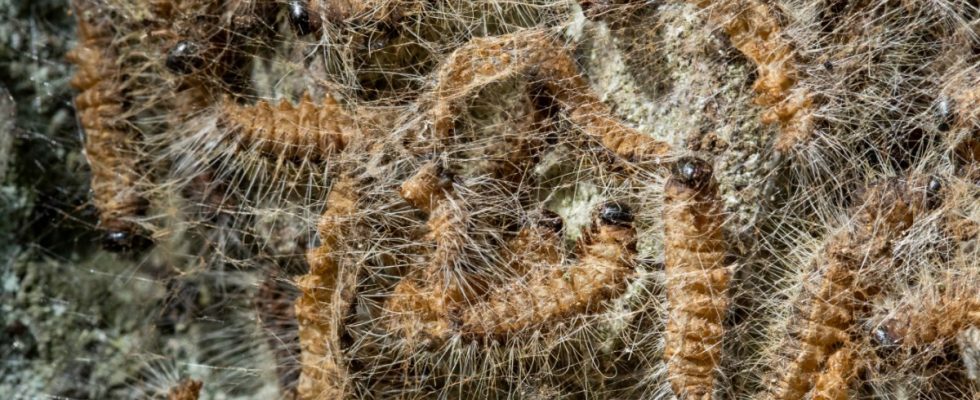The rather cold and rainy spring makes things difficult for the oak processionary moth in Bavaria. So far this spring, no cases of infestation by the insect in the Free State have been announced, as Gabriela Lobinger from the Bavarian State Institute for Forestry and Forestry in Freising said. “The caterpillars of the oak processionary moth hatch very early, and if it is too cold and the oak trees sprout late, there is no food available in the first few weeks of the larval period,” explained the biologist. As a result, the insects die.
A strong increase in the oak processionary moth in Bavaria is therefore not to be expected this year. “I rather expect stagnation or even a decline,” said Lobinger. Where and in what density the caterpillars with their poisonous hairs will appear this year can probably only be said from the second half of June.
The caterpillars of the oak processionary moth primarily attack the trunk of oak trees and damage the tree. However, the insect is mostly fought because of the danger to humans. The caterpillars’ fine hairs cause painful skin irritations – which is why people should stay away from them. If you did come into contact with the little animals, lots of cold water helps to wash them off. In rare cases, the hair of the caterpillars can also cause breathing difficulties, shortness of breath, eye irritation or even an allergic shock.
There were hotspots in Middle Franconia, Upper Palatinate and near Rosenheim
According to Lobinger, vacuuming is the method of choice in areas where the insect poses a greater health risk. Chemicals are hardly used. In recent years, the oak processionary moth has appeared near Ansbach, in several places along the motorways in Central Franconia, in the western Upper Palatinate and near Rosenheim.
Even if the caterpillars of the butterfly have not yet been seen in large numbers this year, webs on plants have been mistaken for the oak processionary moth on several occasions. Expert Lobinger said that people with nets covered plants of spindle trees and bird cherry for webs of the oak processionary moth. However, these were caterpillars of spider moths. “The webs of this insect and the caterpillars themselves are harmless.”
On the other hand, another, not harmless insect was found on oak trees this year. “Like the oak processionary moth, the caterpillar of the goldfinch has poisonous hairs and should therefore also be avoided.” The golden after is also a butterfly. However, the web nests of this insect are small, compact and mostly found on the branch ends of the oak – and not on the trunk like the oak processionary moth. Individual cases of the Goldafter have so far been reported from Ebersberg and Wasserburg in Upper Bavaria.

